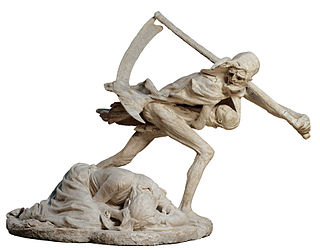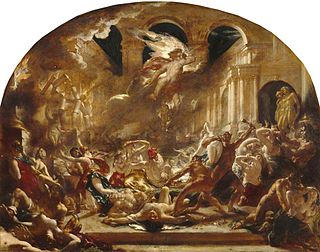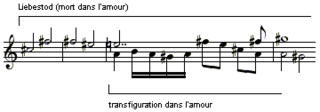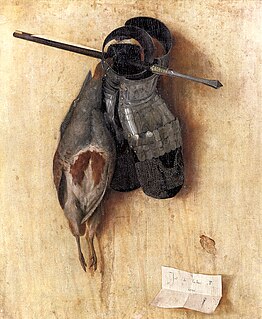 W
WFunerary art is any work of art forming, or placed in, a repository for the remains of the dead. The term encompasses a wide variety of forms, including cenotaphs, tomb-like monuments which do not contain human remains, and communal memorials to the dead, such as war memorials, which may or may not contain remains, and a range of prehistoric megalithic constructs. Funerary art may serve many cultural functions. It can play a role in burial rites, serve as an article for use by the dead in the afterlife, and celebrate the life and accomplishments of the dead, whether as part of kinship-centred practices of ancestor veneration or as a publicly directed dynastic display. It can also function as a reminder of the mortality of humankind, as an expression of cultural values and roles, and help to propitiate the spirits of the dead, maintaining their benevolence and preventing their unwelcome intrusion into the lives of the living.
 W
WThe theme of death within ancient Greek art has continued from the Early Bronze Age all the way through to the Hellenistic period. The Greeks used architecture, pottery, and funerary objects as different mediums through which to portray death. These depictions include mythical deaths, deaths of historical figures, and commemorations of those who died in war. This page includes various examples of the different types of mediums in which death is presented in Greek art.
 W
WAngel of Grief or the Weeping Angel is an 1894 sculpture by William Wetmore Story for the grave of his wife Emelyn Story at the Protestant Cemetery in Rome. Its full title bestowed by the creator was The Angel of Grief Weeping Over the Dismantled Altar of Life.
 W
WApollo and Marsyas is the title of a 1637 painting by the Spanish artist José de Ribera, now in the Royal Museum of Fine Arts of Belgium. Other versions are now in the Museo di Capodimonte and the Naples Archaeological Museum. They all show the Caravaggisti's heavy influence on the artist and depict Marsyas' flaying by Apollo.
 W
WA Burial At Ornans is a painting of 1849–50 by Gustave Courbet, and one of the major turning points of 19th-century French art. The painting records the funeral in September 1848 of his great-uncle in the painter's birthplace, the small town of Ornans. It treats an ordinary provincial funeral with unflattering realism, and on the giant scale traditionally reserved for the heroic or religious scenes of history painting. Its exhibition at the 1850–51 Paris Salon created an "explosive reaction" and brought Courbet instant fame. It is currently displayed at the Musée d'Orsay in Paris, France.
 W
WThe Cook is a c.1570 oil on panel painting by Giuseppe Arcimboldo, now in the Nationalmuseum in Stockholm. It is a still life of roasted meats - when the painting is turned upside-down, these form a human face via pareidolia. The painter also produced The Fruit Basket and The Gardener, using a similar effect.
 W
WThe Crucifixion and Last Judgement diptych consists of two small painted panels attributed to the Early Netherlandish artist Jan van Eyck, with areas finished by unidentified followers or members of his workshop. This diptych is one of the early Northern Renaissance oil on panel masterpieces, renowned for its unusually complex and highly detailed iconography, and for the technical skill evident in its completion. It was executed in a miniature format; the panels are just 56.5 cm (22.2 in) high by 19.7 cm (7.8 in) wide. The diptych was probably commissioned for private devotion.
 W
WCrucifixions and crucifixes have appeared in the arts and popular culture from before the era of the pagan Roman Empire. The crucifixion of Jesus has been depicted in religious art since the 4th century CE. In more modern times, crucifixion has appeared in film and television as well as in fine art, and depictions of other historical crucifixions have appeared as well as the crucifixion of Christ. Modern art and culture have also seen the rise of images of crucifixion being used to make statements unconnected with Christian iconography, or even just used for shock value.
 W
WDeath and Fire, known in German as Tod und Feuer, is a 1940 expressionist painting by Paul Klee. It was one of the last before his death on June 29th of that year. In 1935 Klee started to suffer from scleroderma, which manifested itself with fatigue, skin rashes, difficulty in swallowing, shortness of breath and pain in the joints of his hands. Paintings during this period tended to be simpler and representative of the suffering he was going through. "Tod", the German word for death, is a common motif throughout the painting. It can be seen most distinctly in the features of the face, though the "d" and "t" are rotated. The word can also be seen in the figure's raised arm as the "T", the yellow orb as the "O", and the figure's head as the "D".
 W
WDeath and the Mother is a sculpture created by the Danish sculptor Niels Hansen Jacobsen. Inspired by Hans Christian Andersen's tale The Story of a Mother, it depicts a Grim Reaper figure, in a dynamic pose, carrying a scythe, striding over a mother with a dead child crouching on the ground. The original plaster model is in the holdings of the Danish National Gallery while two bronze castings are located outside St. Peter's Church in Copenhagen and Vejen Art Museum.
 W
WDeath playing chess is a monumental painting in Täby Church located just outside Stockholm, Sweden. It was painted around 1480–1490, by the Swedish medieval painter Albertus Pictor.
 W
WIphigenia was the daughter of Agamemnon and Clytemnestra. According to the story, Agamemnon committed a mistake and had to sacrifice Iphigenia to Artemis to appease her. There are different versions of the story. According to one side of the story, before Agamemnon could sacrifice her, Artemis saved her and replaced her with a deer on the altar. In the other version, Agamemnon actually went through with the sacrifice. The different versions aid in the different depictions of Iphigenia.
 W
WThe Destroying Angel and Daemons of Evil Interrupting the Orgies of the Vicious and Intemperate, also known as The Destroying Angel and Daemons Inflicting Divine Vengeance on the Wicked and Intemperate and as The Destruction of the Temple of Vice, is an oil painting on canvas by English artist William Etty, first exhibited in 1832. Etty had become famous for nude paintings, and acquired a reputation for tastelessness, indecency and a lack of creativity. With The Destroying Angel he hoped to disprove his critics with an openly moral piece. The painting is 127.8 cm by 101.9 cm and depicts a classical temple under attack from a destroying angel and a group of daemons. Some of the humans appear dead or unconscious, others flee or struggle against the daemons.
 W
WDisplaying the Body of Saint Bonaventure is a 1629 painting by Francisco de Zurbarán, now in the Louvre. Around the body of Saint Bonaventure are figures including James I of Aragon and Pope Gregory X, shown in conversation. It formed part of a series of paintings on the saint's life - the other works are Saint Bonaventure at the Council of Lyon (Louvre), Saint Bonaventure and the Angel (Dresden) and Saint Bonaventure and Saint Thomas Aquinas before a Crucifix (Berlin).
 W
WFallen Astronaut is a 3.5-inch (8.9 cm) aluminum sculpture created by Paul Van Hoeydonck. It is a small stylized figure, meant to depict an astronaut in a spacesuit, intended to commemorate the astronauts and cosmonauts who have died in the advancement of space exploration. It was commissioned and placed on the Moon by the crew of Apollo 15 at Hadley Rille on August 1, 1971, next to a plaque listing the 14 men known who died. The statue lies horizontal on the ground among several footprints.
 W
WThe First Funeral is an 1878 plaster sculpture by Louis-Ernest Barrias (1841–1905), first exhibited at the Paris Salon that year, where it won a medal of honour. He then produced a marble version for the Salon of 1883. Both works showing Adam and Eve bearing the body of their son Abel. The plaster original is now in the Museum of Fine Arts of Lyon. The marble version is at the Ny Carlsberg Glyptotek in Copenhagen, Denmark.
 W
WInnocent Victims is a bronze statue of Diana, Princess of Wales and Dodi Fayed, which has been on display at the Harrods department store in London, England, since 2005. It was commissioned by Dodi's father Mohamed Al-Fayed when he owned Harrods, and designed by William Mitchell.
 W
WJedermann. Das Spiel vom Sterben des reichen Mannes is a play by the Austrian playwright Hugo von Hofmannsthal. It is based on several medieval mystery plays, including the late 15th-century English morality play Everyman. It was first performed on 1 December 1911 in Berlin, directed by Max Reinhardt at the Circus Schumann. Since 1920, it has been performed regularly at the Salzburg Festival.
 W
WLachrymae is a late 19th-century painting by British artist Lord Frederic Leighton. Done in oil on canvas, the work depicts a conceptual figure inspired by classical antiquity. Lachrymae is currently in the collection of the Metropolitan Museum of Art.
 W
W"Liebestod" is the title of the final, dramatic music from the 1859 opera Tristan und Isolde by Richard Wagner. It is the climactic end of the opera, as Isolde sings over Tristan's dead body.
 W
WMexican Girl Dying is a marble sculpture carved in 1848 by American artist Thomas Crawford. It measures 20.25 inches (51.4 cm) x 54.5 inches (138 cm) x 19.5 inches (50 cm) and is part of the Metropolitan Museum of Art's collection.
 W
W"One Third of a Nation" is a 1939 painting by American artist O. Louis Guglielmi. Done in oil and tempera on wood, the painting depicts an impoverished apartment block. Guglielmi's work is filled with imagery detailing the poor quality of life during the Great Depression; the buildings seen in the painting are run down, and coffin-like shapes are strewn in the deserted street.
 W
WThe Sirens and Ulysses is a large oil painting on canvas by the English artist William Etty, first exhibited in 1837. It depicts the scene from Homer's Odyssey in which Ulysses (Odysseus) resists the bewitching song of the Sirens by having his ship's crew tie him up, while they are ordered to block their own ears to prevent themselves from hearing the song.
 W
WSlaughtered Ox, also known as Flayed Ox, Side of Beef, or Carcass of Beef, is a 1655 oil on beech panel still life painting by Rembrandt. It has been in the collection of the Louvre in Paris since 1857. A similar painting is in Kelvingrove Art Gallery and Museum, Glasgow, possibly by Rembrandt himself but probably by one of his pupils, perhaps Fabritius. Other similar paintings by Rembrandt or more likely his circle are held by museums in Budapest and Philadelphia.
 W
WStill-Life with Partridge and Gauntlets is a 1504 painting by the Italian painter Jacopo de' Barbari. It measures 52 cm × 42.5 cm and is held by the Alte Pinakothek in Munich. The small oil-on-limewood-panel painting is considered to be one of the earliest examples of a still life painting, and one of the first trompe-l'œil paintings, to be made in Europe since classical antiquity.
 W
WThe Testament and Death of Moses is a fresco attributed to the Italian Renaissance painters Luca Signorelli and Bartolomeo della Gatta, executed in around 1482 and located in the Sistine Chapel, Rome.
 W
WThe Trump Death Clock started as a website, and was later presented in billboard form in Times Square, displaying a claim to the number of deaths attributable to U.S. President Donald Trump's inaction during the COVID-19 pandemic in the United States. The clock was created by Eugene Jarecki. The billboard is on Broadway and West 43rd Street in Manhattan, New York City. The counter is based on the claim that had measures been implemented one week earlier, 60% of American COVID-19 deaths would have been avoided. On June 20, 2020, Eugene Jarecki drove a mobile version during the 2020 Trump Tulsa rally to ensure that Trump's supporters "[had] an opportunity to make an informed choice based on real numbers."
 W
WUnfortunate Events in the Front Seats of the Ring of Madrid, and the Death of the Mayor of Torrejón is the name given to an etching with burnished aquatint, drypoint and burin on paper by the Spanish painter and printmaker Francisco Goya.
 W
WWestward the Course of Empire Takes Its Way is a 20-by-30-foot painted mural displayed behind the western staircase of the House of Representatives chamber in the United States Capitol Building. The mural was painted by Emanuel Gottlieb Leutze in 1861 and symbolizes Manifest Destiny, the belief that the United States was destined for Western exploration and expansion originating from the initial colonies along the Atlantic seaboard to the Pacific Ocean. A study measuring 33 1⁄4 by 43 3⁄8 inches hangs in the Smithsonian American Art Museum.
 W
WWitches' Sabbath is a 1798 oil on canvas by the Spanish artist Francisco Goya. Today it is held in the Museo Lázaro Galdiano, Madrid.